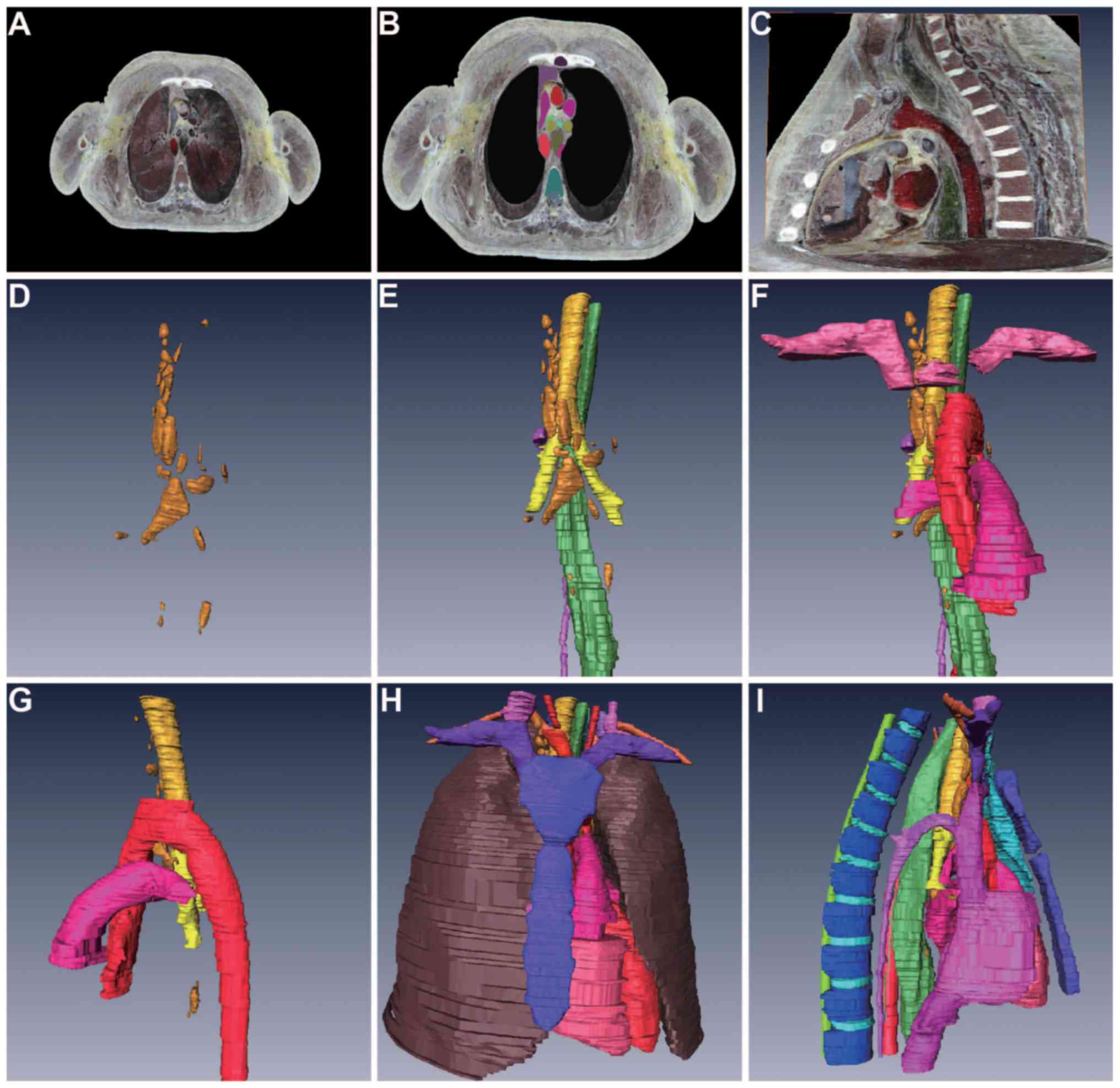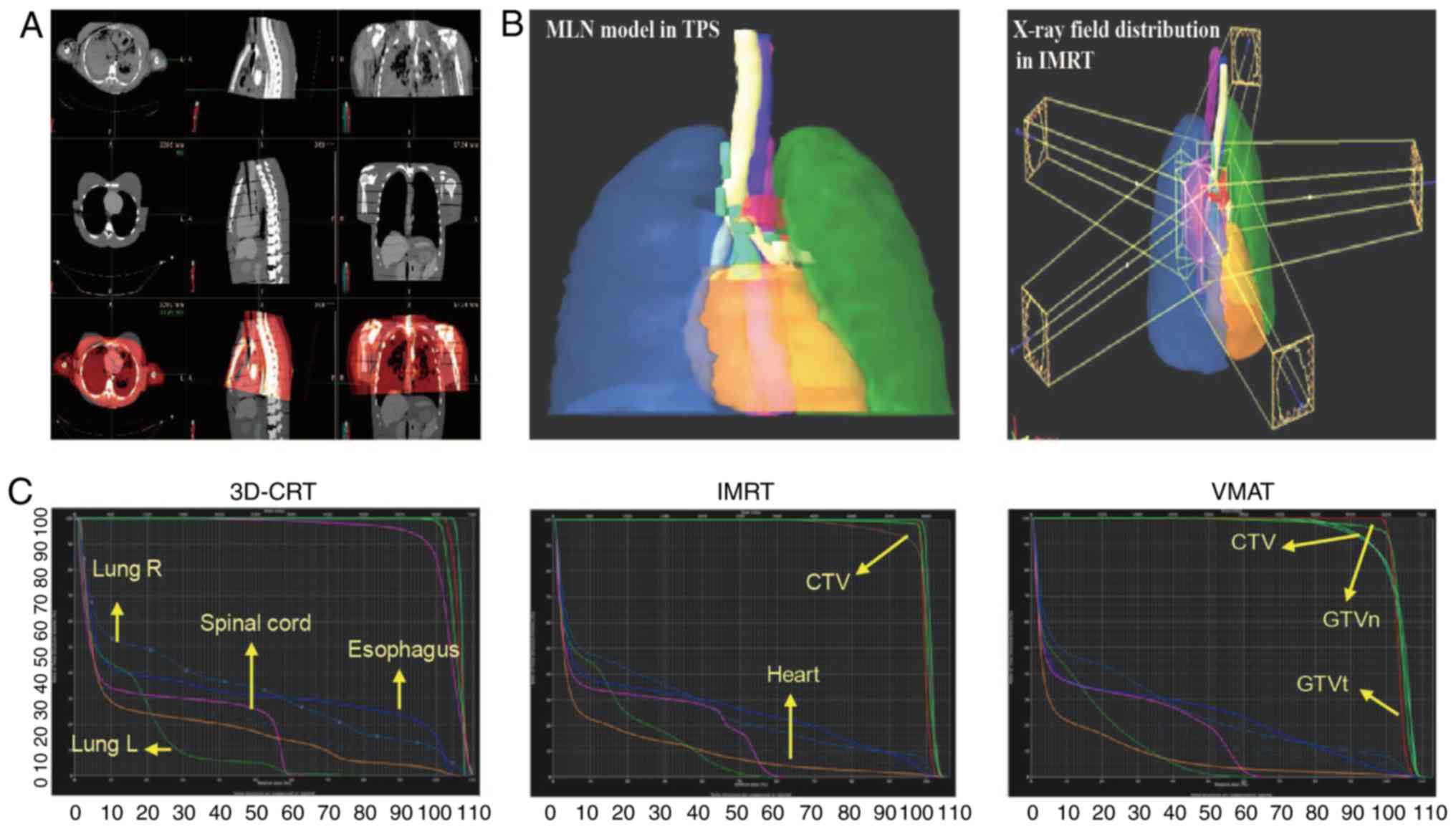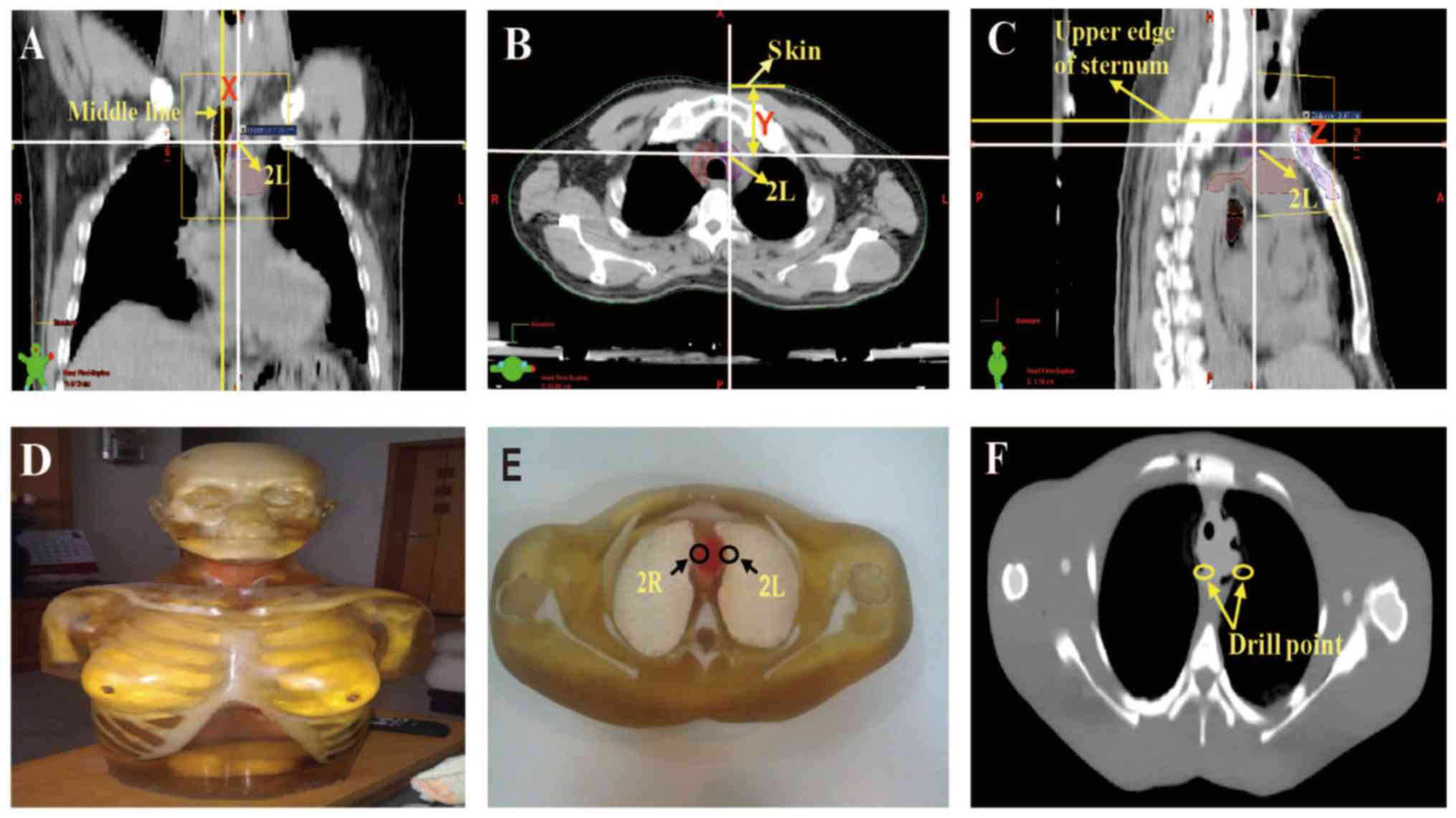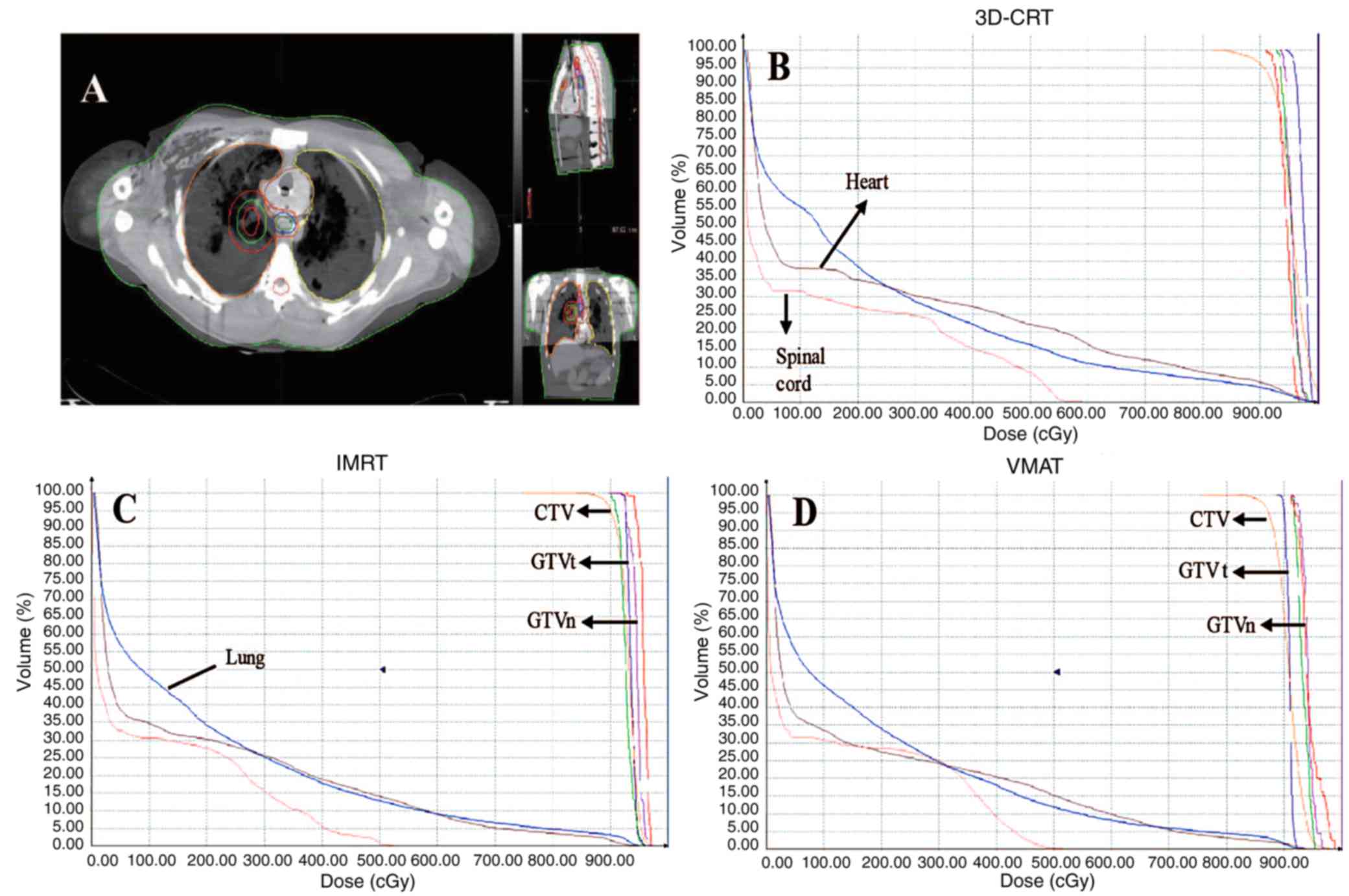|
1
|
Jemal A, Bray F, Center MM, Ferlay J, Ward
E and Forman D: Global cancer statistics. CA Cancer J Clin.
61:69–90. 2011. View Article : Google Scholar : PubMed/NCBI
|
|
2
|
Allemani C, Weir HK, Carreira H, Harewood
R, Spika D, Wang XS, Bannon F, Ahn JV, Johnson CJ, Bonaventure A,
et al: Global surveillance of cancer survival 1995–2009: Analysis
of individual data for 25,676,887 patients from 279
population-based registries in 67 countries (CONCORD-2). Lancet.
385:977–1010. 2015. View Article : Google Scholar : PubMed/NCBI
|
|
3
|
Diwanji TP, Mohindra P, Vyfhuis M, Snider
JW III, Kalavagunta C, Mossahebi S, Yu J, Feigenberg S and Badiyan
SN: Advances in radiotherapy techniques and delivery for non-small
cell lung cancer: Benefits of intensity-modulated radiation
therapy, proton therapy, and stereotactic body radiation therapy.
Transl Lung Cancer Res. 6:131–147. 2017. View Article : Google Scholar : PubMed/NCBI
|
|
4
|
Jensen I, Carl J, Lund B, Larsen EH and
Nielsen J: Radiobiological impact of reduced margins and treatment
technique for prostate cancer in terms of tumor control probability
(TCP) and normal tissue complication probability (NTCP). Med Dosim.
36:130–137. 2011. View Article : Google Scholar : PubMed/NCBI
|
|
5
|
Palma DA, Verbakel WF, Otto K and Senan S:
New developments in arc radiation therapy: A Review. Cancer Treat
Rev. 36:393–399. 2010. View Article : Google Scholar : PubMed/NCBI
|
|
6
|
Chan OS, Lee MC, Hung AW, Chang AT, Yeung
RM and Lee AW: The superiority of hybrid-volumetric arc therapy
(VMAT) technique over double arcs VMAT and 3D-conformal technique
in the treatment of locally advanced non-small cell lung cancer-A
planning study. Radiother Oncol. 101:298–302. 2011. View Article : Google Scholar : PubMed/NCBI
|
|
7
|
Rauschenbach BM, Mackowiak L and Malhotra
HK: A dosimetric comparison of three-dimensional conformal
radiotherapy, volumetric-modulated arc therapy, and dynamic
conformal arc therapy in the treatment of non-small cell lung
cancer using stereotactic body radiotherapy. J Appl Clin Med Phys.
15:48982014. View Article : Google Scholar : PubMed/NCBI
|
|
8
|
Wu Z, Xie C, Hu M, Han C, Yi J, Zhou Y,
Yuan H and Jin X: Dosimetric benefits of IMRT and VMAT in the
treatment of middle thoracic esophageal cancer: Is the conformal
radiotherapy still an alternative option? J Appl Clin Med Phys.
15:93–101. 2014. View Article : Google Scholar : PubMed/NCBI
|
|
9
|
Bzdusek K, Friberger H, Eriksson K,
Hårdemark B, Robinson D and Kaus M: Development and evaluation of
an efficient approach to volumetric arc therapy planning. Med Phys.
36:2328–2339. 2009. View Article : Google Scholar : PubMed/NCBI
|
|
10
|
Heineman DJ, Daniels JM and Schreurs WH:
Clinical staging of NSCLC: Current evidence and implications for
adjuvant chemotherapy. Ther Adv Med Oncol. 9:599–609. 2017.
View Article : Google Scholar : PubMed/NCBI
|
|
11
|
Mountain CF and Dresler CM: Regional lymph
node classification for lung cancer staging. Chest. 111:1718–1723.
1997. View Article : Google Scholar : PubMed/NCBI
|
|
12
|
Rusch VW, Asamura H, Watanabe H, Giroux
DJ, Rami-Porta R and Goldstraw P; Members of IASLC Staging
Committee, : The IASLC lung cancer staging project: A proposal for
a new international lymph node map in the forthcoming seventh
edition of the TNM classification for lung cancer. J Thorac Oncol.
4:568–577. 2009. View Article : Google Scholar : PubMed/NCBI
|
|
13
|
Lababede O, Meziane M and Rice T: Seventh
edition of the cancer staging manual and stage grouping of lung
cancer: Quick reference chart and diagrams. Chest. 139:183–189.
2011. View Article : Google Scholar : PubMed/NCBI
|
|
14
|
Shen G, Lan Y, Zhang K, Ren P and Jia Z:
Comparison of 18F-FDG PET/CT and DWI for detection of mediastinal
nodal metastasis in non-small cell lung cancer: A meta-analysis.
PLoS One. 12:e01731042017. View Article : Google Scholar : PubMed/NCBI
|
|
15
|
Zhang SX, Heng PA, Liu ZJ, Tan LW, Qiu MG,
Li QY, Liao RX, Li K, Cui GY, Guo YL, et al: Creation of the
Chinese visible human data set. Anat Rec B New Anat. 275:190–195.
2003. View Article : Google Scholar : PubMed/NCBI
|
|
16
|
Zhang SX, Heng PA, Liu ZJ, Tan LW, Qiu MG,
Li QY, Liao RX, Li K, Cui GY, Guo YL, et al: The Chinese Visible
Human (CVH) datasets incorporate technical and imaging advances on
earlier digital human. J Anat. 204:165–173. 2004. View Article : Google Scholar : PubMed/NCBI
|
|
17
|
Wu Y, Luo N, Tan L, Fang B, Li Y, Xie B,
Liu K, Chu C, Li M and Zhang S: Three-dimensional reconstruction of
thoracic structures: Based on chinese visible human. Comput and
Math Methods Med. 2013:7956502013. View Article : Google Scholar
|
|
18
|
Rong J, Wang Q, Liu K, Tan L, Ran X, Zhang
S, Li Q and Han Y: A new atlas localization approach for
subthalamic nucleus utilizing Chinese visible human head datasets.
PLoS One. 8:e572642013. View Article : Google Scholar : PubMed/NCBI
|
|
19
|
Capelle L, Warkentin H, Mackenzie M,
Joseph K, Gabos Z, Pervez N, Tankel K, Chafe S, Amanie J, Ghosh S,
et al: Skin-sparing helical tomotherapy vs. 3D-conformal
radiotherapy for adjuvant breast radiotherapy: In Vivo, skin
dosimetry study. Int J Radiat Oncol Biol Phys. 83:e583–e590. 2012.
View Article : Google Scholar : PubMed/NCBI
|
|
20
|
Nazemi-Gelyan H, Hasanzadeh H, Makhdumi Y,
Abdollahi S, Akbari F, Varshoee-Tabrizi F, Almasrou H, Nikoofar A
and Rezaei-Tavirani M: Evaluation of organs at risk's dose in
external radiotherapy of brain tumors. Iran J Cancer Prev. 8:47–52.
2015.PubMed/NCBI
|
|
21
|
Adolfsson E, Gustafsson H, Lund E, Alm
Carlsson G, Olsson S and Carlsson Tedgren S: A system for remote
dosimetry audit of 3D-CRT, IMRT and VMAT based on lithium formate
dosimetry. Radiother Oncol. 113:279–282. 2014. View Article : Google Scholar : PubMed/NCBI
|
|
22
|
Jiang X, Li T, Liu Y, Zhou L, Xu Y, Zhou X
and Gong Y: Planning analysis for locally advanced lung cancer:
Dosimetric and efficiency comparisons between intensity-modulated
radiotherapy (IMRT), single-arc/partial-arc volumetric modulated
arc therapy (SA/PA-VMAT). Radiat Oncol. 6:1402011. View Article : Google Scholar : PubMed/NCBI
|
|
23
|
ICRU report 48, phantoms and computational
models in therapy, diagnosis and protection. 1992.
|
|
24
|
Lehmann J, Stern RL, Levy J, Daly TP,
Siantar CL and Goldberg Z: Radiation phantom with humanoid shape
and adjustable thickness (RPHAT). Phys Med Biol. 49:N125–N129.
2004. View Article : Google Scholar : PubMed/NCBI
|
|
25
|
Peng G, Zeng Y, Luo T, Zhao F, Peng S, You
R, Tan H, Liu X and Wang J: Organ dose evaluation for multi-slice
spiral CT scans based on China Sichuan chest anthropomorphic
phantom measurements. Radiat Prot Dosimetry. 150:292–297. 2012.
View Article : Google Scholar : PubMed/NCBI
|
|
26
|
Feuvret L, Noël G, Mazeron JJ and Bey P:
Conformity index: A review. Int J Radiat Oncol Biol Phys.
64:333–342. 2006. View Article : Google Scholar : PubMed/NCBI
|
|
27
|
Ayata HB, Güden M, Ceylan C, Kücük N and
Engin K: Comparison of dose distributions and organs at risk (OAR)
doses in conventional tangential technique (CTT) and IMRT plans
with different numbers of beam in left-sided breast cancer. Rep
Pract Oncol Radiother. 16:95–102. 2011. View Article : Google Scholar : PubMed/NCBI
|
|
28
|
Mountain CF: Revisions in the
international system for staging lung cancer. Chest. 111:1710–1717.
1997. View Article : Google Scholar : PubMed/NCBI
|
|
29
|
Weder W: Lung cancer: New
opportunities-changing algorithm in staging. Ann Oncol. 19 Suppl
7:vii28–vii30. 2008. View Article : Google Scholar : PubMed/NCBI
|
|
30
|
Gurjar OP, Mishra SP, Bhandari V, Pathak
P, Patel P and Shrivastav G: Radiation dose verification using real
tissue phantom in modern radiotherapy techniques. J Med Phys.
39:44–49. 2014. View Article : Google Scholar : PubMed/NCBI
|
|
31
|
Yamazaki H, Iwama K, Nishimura T, Iwai Y,
Aibe N, Takenaka T, Miyake S, Tanaka E, Yoshida K, Oota Y, et al:
Comparison of calculated dose by helical tomotherapy treatment
planning machine and measured dose of radiophotoluminescence glass
dosimeter in lung lesions using Rando Phantom. Anticancer Res.
33:1679–1684. 2013.PubMed/NCBI
|
|
32
|
Kinhikar RA, Tambe CM, Patil K, Mandavkar
M, Deshpande DD, Gujjalanavar R, Yadav P and Budrukkar A:
Estimation of dose enhancement to soft tissue due to backscatter
radiation near metal interfaces during head and neck radiothearpy-A
phantom dosimetric study with radiochromic film. J Med Phys.
39:40–43. 2014. View Article : Google Scholar : PubMed/NCBI
|
|
33
|
Seppala J, Suilamo S, Kulmala J, Mali P
and Minn H: A dosimetric phantom study of dose accuracy and
build-up effects using IMRT and RapidArc in stereotactic
irradiation of lung tumours. Radiat Oncol. 7:792012. View Article : Google Scholar : PubMed/NCBI
|
|
34
|
Surucu M, Yeginer M, Kavak GO, Fan J,
Radosevich JA and Aydogan B: Verification of dose distribution for
volumetric modulated arc therapy total marrow irradiation in a
humanlike phantom. Med Phys. 39:281–288. 2012. View Article : Google Scholar : PubMed/NCBI
|
|
35
|
Padmanaban S, Boopathy R, Kunjithapatham
B, Sukumar P and Nagarajan V: A phantom study on the effects of
target motion in non-gated kV-CBCT imaging. Australas Phys Eng Sci
Med. 33:59–64. 2010. View Article : Google Scholar : PubMed/NCBI
|













